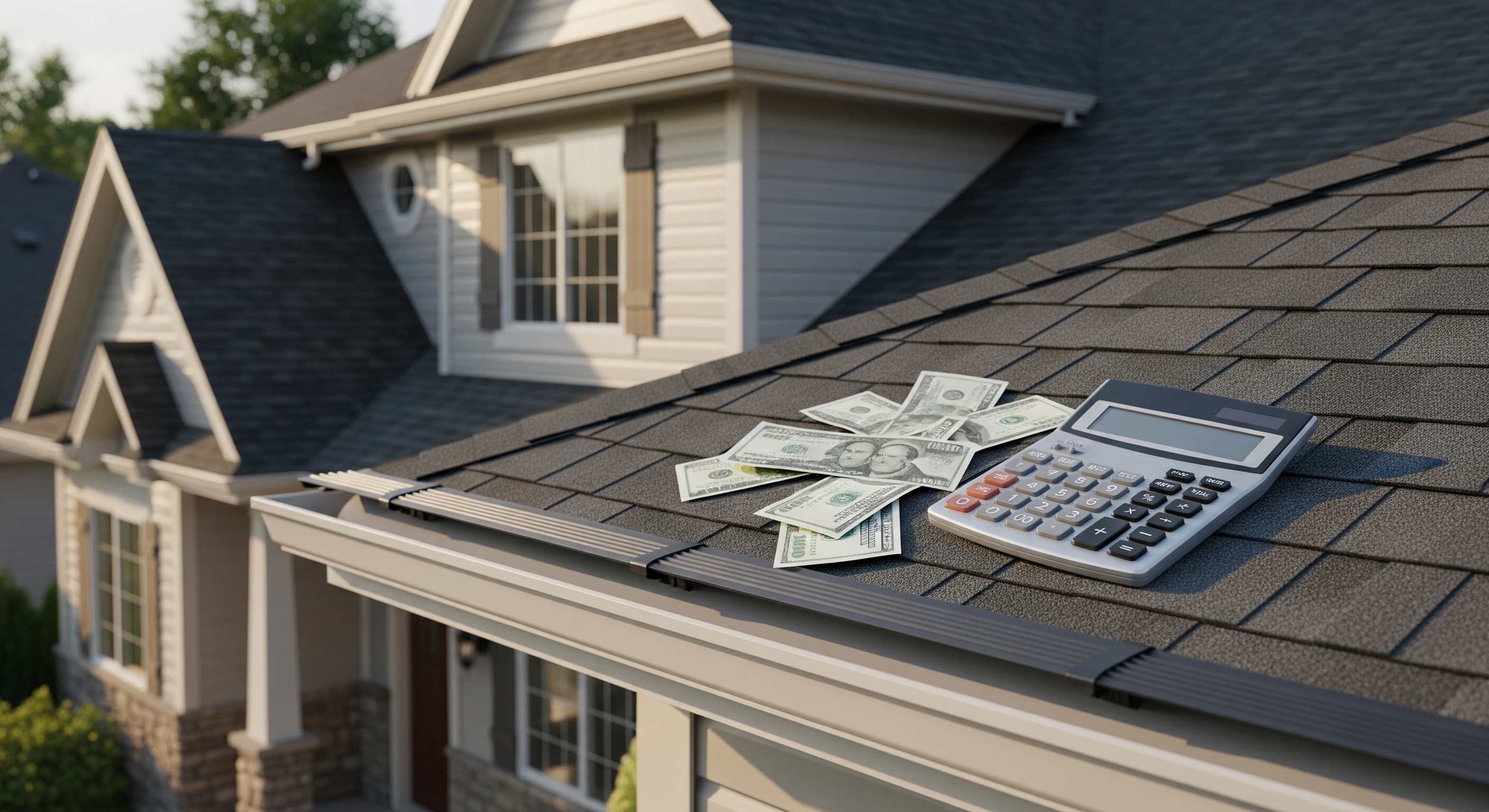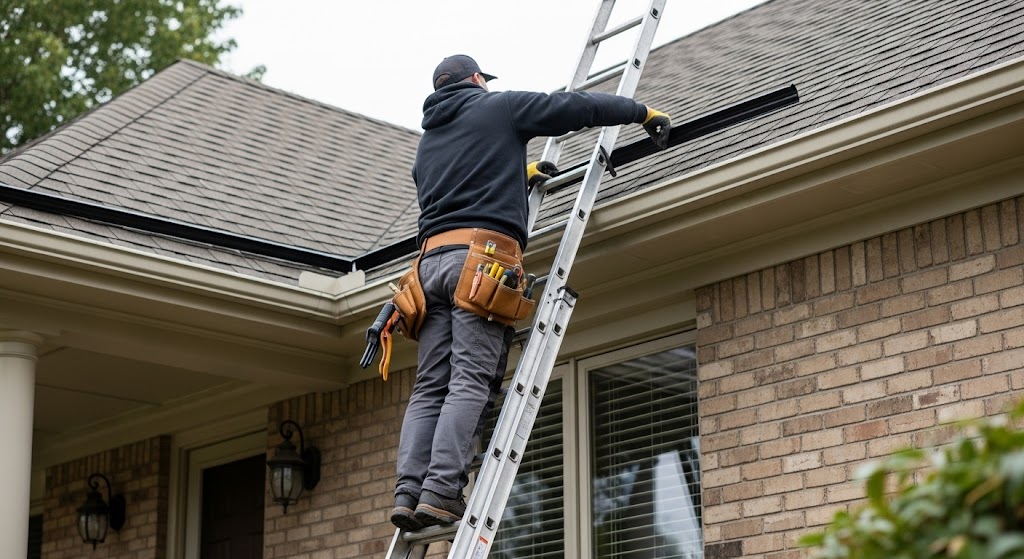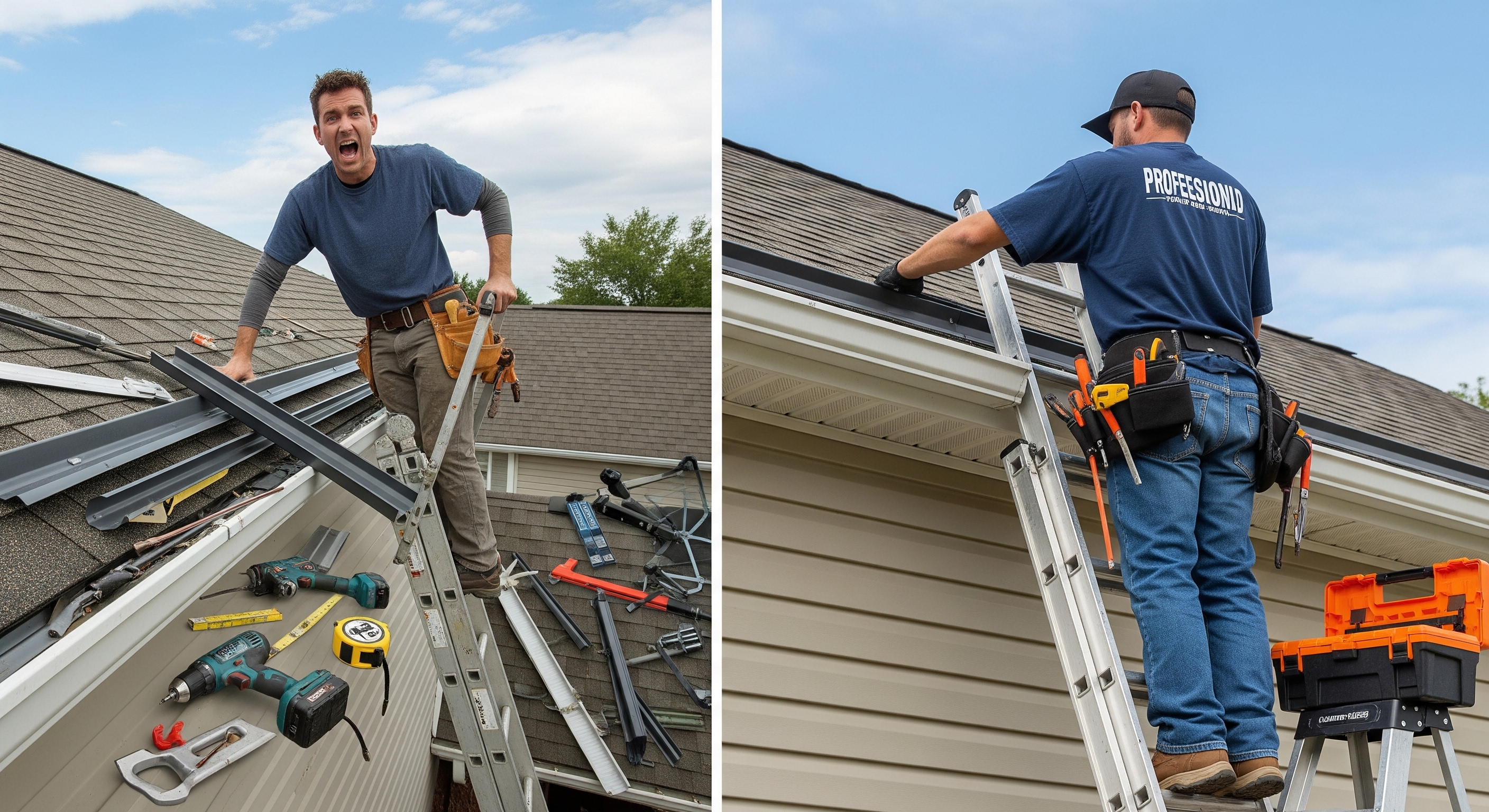
How Much do Gutter Guards Cost

When homeowners research affordable solutions to protect their roofs and foundations they often focus on gutter guard installation from the start. Installing a high-quality gutter guard system can prevent clogs, reduce maintenance, and safeguard against water damage. As the cost of gutter guard installation gains attention it becomes crucial to understand the variables that shape price estimates, from material type to labor rates and regional factors. This comprehensive guide explores national averages, compares DIY options with professional services, and uncovers the hidden expenses associated with different guard styles.
How much does gutter guard installation cost?
Gutter guard installation cost can vary widely depending on factors like material selection, home size, and whether homeowners choose a DIY approach or hire a professional crew. Most installations for a 200-foot system fall between $684 and $2,213, with a national average around $1,448. Simple DIY kits can bring that figure down to as low as $161, while top-of-the-line micro-mesh systems installed by experts may reach $4,787. Understanding these figures helps homeowners budget effectively and choose the option that best balances performance and price.
Average National Investment
Across the United States, the typical homeowner spends about $1,448 to fully outfit 200 linear feet of gutters with guards. Installation rates equate to roughly $3.42 to $11.07 per linear foot, with extremes ranging from low-end DIY jobs at $0.80 per foot to premium installs nearing $24 per foot. Variations stem from the intricacy of the gutter layout, local labor costs, and the specific guard model selected.
Comparing DIY and Professional Installation
DIY approaches can significantly reduce upfront labor expenses, but they require time, tools, and a comfort level working on ladders. Professional crews guarantee a precise fit, often include warranties, and can efficiently navigate complex rooflines. In many cases, homeowners who attempt a DIY job find the learning curve steeper than expected, leading to potential misalignment or gaps. This trade-off between cost savings and installation quality is at the heart of any Gutter Guard Installation decision.
Regional Pricing Variation
Costs also fluctuate by region. Urban areas with higher labor rates—such as New York City or San Francisco—can push installation fees above the national average. Conversely, suburban and rural markets may offer more competitive rates, especially during off-peak seasons. Climate influences also play a role: regions prone to heavy rainfall or frequent storms often demand sturdier materials, which can increase the overall gutter protection cost.
What factors influence gutter guard prices?
Gutter guard prices hinge on three primary elements: material quality, roof complexity, and labor rates. High-end stainless steel micro-mesh commands premium pricing for its fine filtration and durability. Homes with multiple roof pitches or significant height require extra safety measures, lifting labor costs. Seasonal demand creates additional variability, with spring and fall surges sometimes bumping rates higher.
Material Type and Quality
Choosing the right material is the first step in estimating the cost of gutter guard installation. From budget-friendly plastic screens to stainless steel micro-mesh, each option carries its own price-to-performance ratio.
Metal options like perforated aluminum and stainless steel mesh resist corrosion and lasting wear, while foam inserts appeal to budget-minded homeowners. The table above highlights typical cost ranges, enabling a side-by-side comparison when planning a gutter guard upgrade.
Roof Complexity and Home Architecture
Architectural features such as multiple eaves, gables, and dormers complicate installation efforts. Steep slopes drive up safety precautions and time on the ladder, inflating labor costs. Multi-story structures add another layer of expense, as crews require specialized equipment to reach higher gutters safely. Engaging an experienced provider can streamline the process and minimize installation errors for intricate roof designs brought to you by Home Defender USA specialists.
Labor Rates and Seasonal Demand
Gutter guard installation crews often adjust their rates based on time of year. Peak demand in spring and fall can add a premium to labor, especially in regions with heavy foliage or persistent storms. Off-season booking, typically in late winter, may secure lower project costs and faster scheduling. Local contractor availability also impacts pricing, with rural areas sometimes benefiting from more competitive labor fees.
Which gutter guard types deliver the best value?
Choosing the right guard material means balancing upfront cost against long-term performance. Certain materials excel at keeping out debris, while others shine in longevity or ease of maintenance. The following subsections outline the most popular guard styles and their core advantages.
Mesh Gutter Guards
Mesh gutter guards filter out leaves and medium-sized debris while permitting heavy water flow. Constructed from aluminum or stainless steel, they resist rust and UV damage. Installation is straightforward, making this an appealing mid-range choice for homeowners seeking a blend of cost and durability.
Micro-Mesh Gutter Guards
Engineered with ultra-fine stainless steel fabric, micro-mesh guards block even the tiniest particles, including shingle grit and pine needles. Their premium filtration comes at a higher price point, but the reduction in clogging and cleaning frequency often justifies the investment. Many experts regard micro-mesh as the gold standard for comprehensive gutter protection.
Foam Gutter Guards
Foam inserts sit inside the gutter channel and allow water to pass through porous material while trapping leaves on top. They’re easy to install and among the most affordable options on the market. Homeowners should inspect them periodically for degradation or mold buildup, as foam can break down over time without regular maintenance. To explore professional options, feel free to Contact Us for a tailored assessment.
Surface Tension Gutter Guards
Surface tension guards guide rainwater over a curved hood and into the gutter trough, letting debris slide off the edge. These guards excel in heavy rainfall zones, though sticky debris like wet pine needles can occasionally cling to the hood. Proper installation is key for optimal performance—consulting certified installers ensures a precise fit and effective operation as detailed on our About US page.
How does gutter protection cost translate into long-term savings?
While initial investment figures can seem steep, quality gutter guards deliver measurable savings over time. Restricting soil erosion, preventing foundation cracks, and avoiding roof water damage can each save thousands of dollars in repair costs. Evaluating the total cost of ownership reveals real value beyond simple installation fees.
Reducing Maintenance and Cleaning Expenses
Gutter guards cut annual cleaning needs by up to 90 percent, reducing ladder work and associated risks. Professional gutter cleaning can cost $100–$300 per visit, and biannual service adds up quickly. By keeping debris at bay, guards minimize these recurring expenses and free homeowners from seasonal maintenance chores.
Preventing Water Damage Costs
Clogged gutters often lead to water overflow that can compromise siding, fascia, and basement walls. Repairs for water damage commonly range from $500 for minor fixes to $10,000 for extensive foundation remediation. A well-installed gutter guard system acts as the first line of defense against these costly issues.
Extending Gutter Lifespan
Accumulated debris and standing water accelerate rust and wear. High-quality guards shield gutter channels from moisture retention, helping aluminum systems last 20 years or more. By preserving the structural integrity of the troughs and fasteners, homeowners delay full gutter replacement—often a $2,000–$5,000 project.
Making the right investment: selecting the best gutter guard installation partner
Choosing an installer is as critical as selecting materials. A reputable company offers certified technicians, clear pricing, and solid warranties. Researching credentials and customer feedback can mean the difference between a seamless upgrade and a frustrating installation saga.
Reviewing Warranty and Service Agreements
Top providers back their products with 10- to 25-year warranties covering materials and workmanship. Homeowners should scrutinize warranty terms to confirm coverage for wind damage, UV exposure, and labor. Clear service guarantees often include free inspections and gutter cleaning check-ups in the first few years post-install.
Evaluating Customer Reviews and Ratings
Online reviews on home services platforms and local community forums reveal real-world experiences. High ratings paired with detailed testimonials about punctuality, cleanup protocols, and post-install support signal trustworthy operators. Conversely, patterns of delayed responses or missed appointments warrant caution and further vetting.
Conclusion
Investing in gutter guard installation is a strategic move that balances upfront expenses against long-term savings in maintenance, repairs, and peace of mind. By understanding average costs, material strengths, and labor variables homeowners can make informed choices aligned with their budgets and property needs. Whether prioritizing budget-friendly foam inserts or premium stainless steel micro-mesh, the right solution protects both roof and foundation from the elements. As gutters work tirelessly behind the scenes, a knowledgeable investment in quality guards pays dividends year after year. Trust the experts at Home Defender USA to deliver durable, cost-effective gutter protection designed for lasting performance while keeping your gutter protection cost transparent and fair.
Frequently Asked Questions
How much do gutter guard prices vary by material?
Gutter guard prices can range from under $1 per linear foot for basic plastic screens to over $10 per foot for premium micro-mesh systems. Material cost is the largest driver of overall price, so homeowners should match guard performance to their specific debris challenges and budget.
Are gutter guards worth the cost?
For properties with heavy tree cover or regions prone to seasonal storms, gutter guards typically pay for themselves in maintenance savings within three to five years. Avoiding costly water damage and reducing cleaning visits often yields a strong return on investment.
What is the average lifespan of gutter guard systems?
High-quality metal guards, such as stainless steel micro-mesh, can last 15–25 years with minimal upkeep. Plastic and foam products may require replacement after 5–10 years, depending on UV exposure and climate conditions.
How often should gutter guards be maintained?
Even the best gutter guards benefit from an annual inspection and light debris removal. This prevents any small particles that bypass the guard from accumulating and ensures proper water flow year-round.
Can gutter guards be installed on any type of roof?
Most gutter guards are compatible with the full range of common roof slopes and materials, including asphalt shingle, metal standing-seam, and tile roofs. Professional installers account for flashing, pitch, and gutters’ attachment method to ensure a secure fit.














.jpg)











